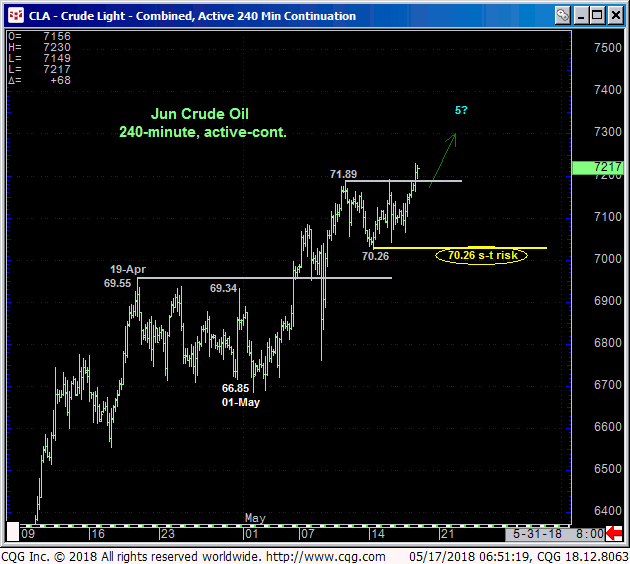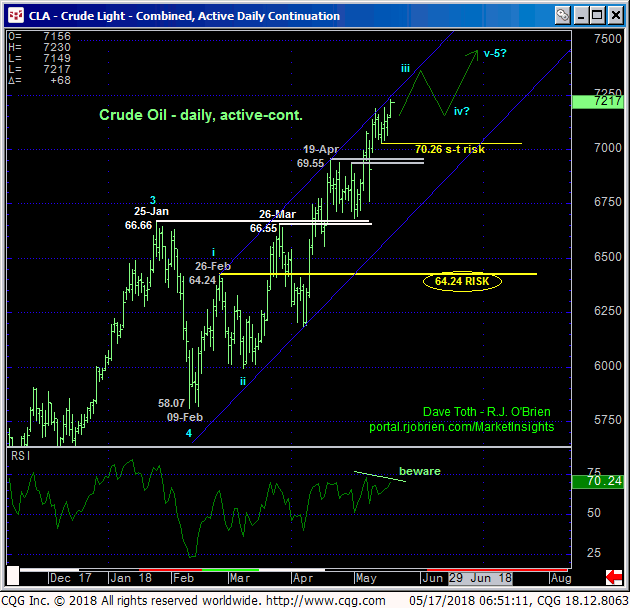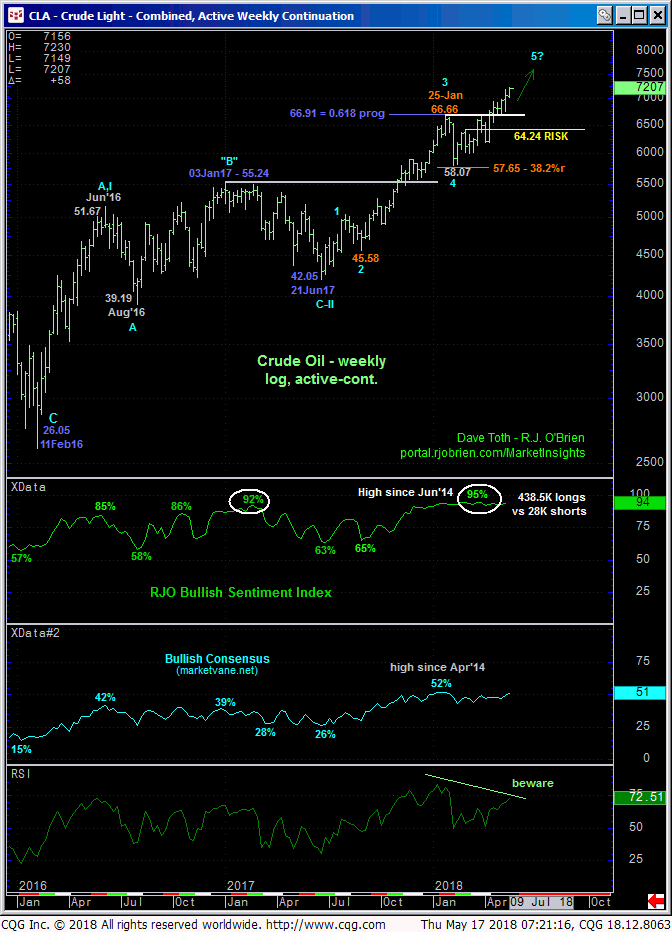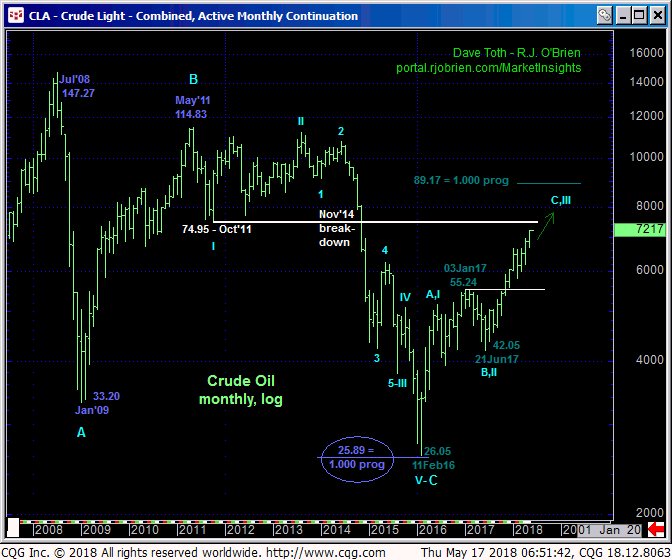
In June crude oil, the overnight’s break to yet another new high in what now is a 27-MONTH bull trend leaves Mon’s 70.26 low in its wake as the latest smaller-degree corrective low this market is now minimally required to fail below to even defer the bull, let alone threaten it. In fact, the trend is up on all scales and should not surprise by its continuance or acceleration. In this regard 70.26 is considered our new short-term risk parameter to a still-advised bullish policy and exposure for shorter-term traders with tighter risk profiles.


The POTENTIAL for a bearish divergence in momentum is shown in the daily chart above, but only proof of weakness below at least 70.26 will CONFIRM this indicator to the point of non-bullish action like long-covers. And even then, the magnitude of the secular uptrend is such that we’d only be able to conclude an interim correction lower ahead of an eventual resumption of the bull. Indeed, the magnitude of major, 27-month uptrend and likelihood of continued and potentially major gains even from “up here” requires commensurately larger-degree proof of weakness to contest it. And we are identifying 26-Feb’s 64.24 1st-Wave high (of the resumed rally from 09-Feb’s 58.07 low) as our new long-term risk parameter this market is required to break to jeopardize the impulsive integrity of a broader 5-wave Elliott sequence up from that early-Feb low. Lying between spot and that larger-degree risk parameter is 25-Jan’s former 66.66-area resistance that, since broken in mid-Apr, now serves as a major new support candidate.
The weekly log active-continuation chart below also shows understandably historically frothy sentiment levels in our RJO Bullish Sentiment Index of the hot Managed Money positions reportable to the CFTC. Such frothy sentiment is typical of major PEAK/reversal conditions. But traders are reminded that sentiment is not an applicable technical tool in the absence of a confirmed bearish divergence in momentum of a scale sufficient to threaten the major uptrend. Additionally, the Bullish Consensus (marketvane.net) remains “indifferent” at a mere 51% reading. DESPITE the magnitude and clarity of the major uptrend, we view this indifference and apparent skepticism as a reinforcing factor to the secular bull as this infers that the huddled masses have yet to get sucked into buying (late) around the eventual end of the major bull, which is why contrary opinion measures are such an important component of our analysis.

Finally, since introducing the prospect for a major new bull market in the energy complex in 16Feb2016’s Technical Blog, we have often cited the 65-to-90-range as a likely target for the bull. The 65-handle-area was the 61.8% retrace of 2011 – 2016’s 114.83 – 26.05 secular bear market. This minimum target has already been exceeded. The “90-area” stems from the (89.17) 1.000 progression of 2016-17’s 26.05 – 55.24 rally from Jun’17’s 42.05 low on a monthly log scale basis below. Additionally, the 75-handle-area defined the lower boundary of a 3-YEAR range between Oct 2011 and Nov’14 that, since broken, exposes this area as a new resistance candidate.
IF the 75-to-90-range is going to end up housing the end to this major bull, then we’d expect the bull to start showing signs of fatigue via waning upside momentum and confirmed bearish divergences in momentum. We’ve seen NONE of such waning upside to this point, but herein lies the importance of identifying risk parameters like 64.24, 01-May’s 66.85 corrective low and even Mon’s 70.26 short-term risk parameter. And until the bull starts waning below such levels, the trend is up on all scales and should not surprise by its continuance or acceleration.
In sum, a full and aggressive bullish policy and exposure remain advised with a failure below 70.26 required for shorter-term traders with tighter risk profiles to step aside to circumvent the depths unknown of what we’d suspect at that point would be just a slightly larger-degree correction ahead of an eventual resumption of the major bull. Weakness below at least 01-May’s 66.85 and preferably below 64.24 is required for long-term players to pare or neutralize bullish exposure. In lieu of such weakness, further and possibly accelerated gains remain expected.


